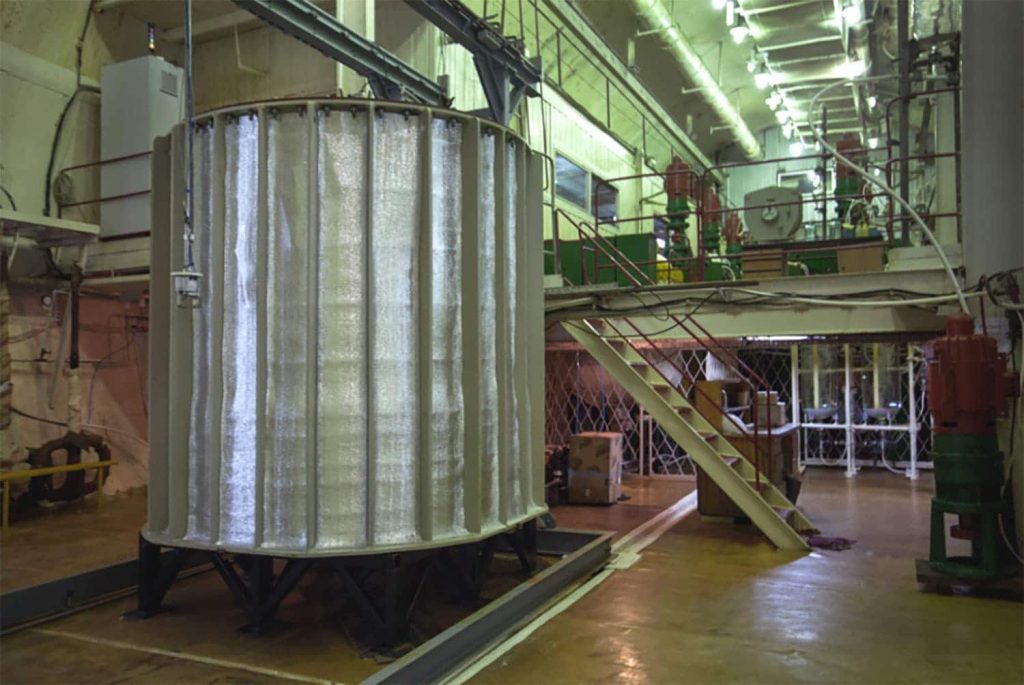
Missing neutrinos in Russian experiment may indicate new particle
An experiment deep in the Caucasus Mountains found fewer neutrinos than you would expect based on theory. Are sterile neutrinos responsible for this?
Neutrinos: They continue to excite scientific minds. Last week, we wrote about two American experiments, one of which thinks it has measured an excessive amount of neutrinos, while the other doesn’t see anything crazy. This report is about a Russian detector that actually measured fewer neutrinos than expected. Both a US surplus and a Russian deficit could point to a new particle: the so-called sterile neutrino.
Less germanium than expected
Baksan Experiment on Sterile Transformations (BEST) is located approximately 3.5 kilometers from the Russian Caucasus Mountains in Russia. In addition, the laboratory in which the experiment is located is enclosed in 60 cm of special concrete and 6 mm of steel; All to ward off annoying outside influences.
BEST’s core consists of 26 radioactive chromium discs that emit neutrinos. Surrounding these disks are a sphere and cylinder, both of which are filled with liquid gallium, a metal that melts at 30°C. What has to happen now and then is that such a neutrino turns an atomic gallium nucleus into an atomic nucleus of the element germanium.
You can calculate how often such a shift occurs for a given supply of neutrinos. But you can also measure it by looking at how much germanium formed in gallium after a while. The best researchers now have the latter he did† They conclude: Germanium nuclei are 20 to 24 percent fewer than you would expect.
No discovery yet
Best is not the first experience to measure this phenomenon. Previously, the teams behind the SAGE and GALLEX trials, which also used gallium, found the same thing. BEST can now confirm their strange measurements with a different setup.
Moreover, the chance that the result will be due to chance is less with the best as compared to the previous two mentioned. You still can’t speak of a real discovery; The standard in this branch of science is very high for that. But the best result comes close enough to seriously scratch your head as a physicist.
Not in accounting
The big question then is: Why is there less germanium than you expect? One possibility is that some of the neutrinos from the chromium disks undergo a transformation. Then they turn from a normal neutrino – as far as you can talk about normal neutrinos – into a sterile neutrino. A sterile neutrino cannot convert gallium into germanium.
In fact, a sterile neutrino can do just about anything. These virtual particles do not interact with other particles in any way. The only way it affects their environment is through gravity – and this force is too weak to play any role on the particle scale.
This extreme shyness makes sterile neutrinos nearly immeasurable. Unless an ordinary neutrino now and then changes into such a sterile neutrino. As a result, they are missing from experience accounts such as SAGE, GALLEX or BEST.
It’s a big challenge
Now, of course, something completely different could also happen here. But scientific articles on the best result show that the researchers themselves have no idea what this “thing” should be. “Other explanations without sterile neutrinos are possible, but then there must be some basic misconceptions in nuclear or atomic physics,” they wrote. in the magazine physical review c†
For future experiments with gallium, you’d actually want to work with a source that is more compact, and therefore more powerful than neutrinos, the researchers continued. Then the interior of the ball containing liquid gallium could be closer to the neutrino source, and you can see at shorter distances how much gallium neutrinos are able to convert into germanium. But according to the BEST team, this is quite a challenge.
finger on it
However, it seems very feasible to continue this type of research. Whether it’s about sterile neutrinos or not, there’s something crazy going on in the various neutrino experiments. And who knows what it will bring us if physicists can get it.

“Travel enthusiast. Alcohol lover. Friendly entrepreneur. Coffeeaholic. Award-winning writer.”
